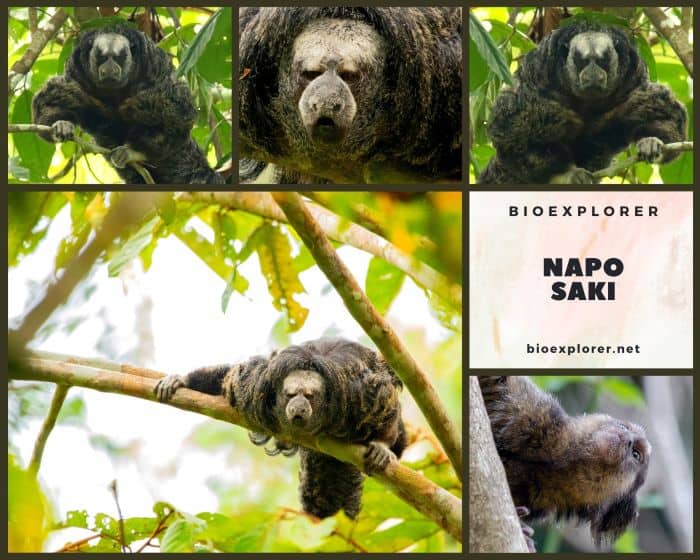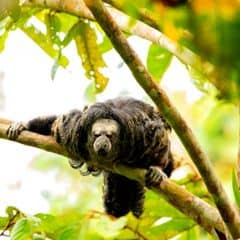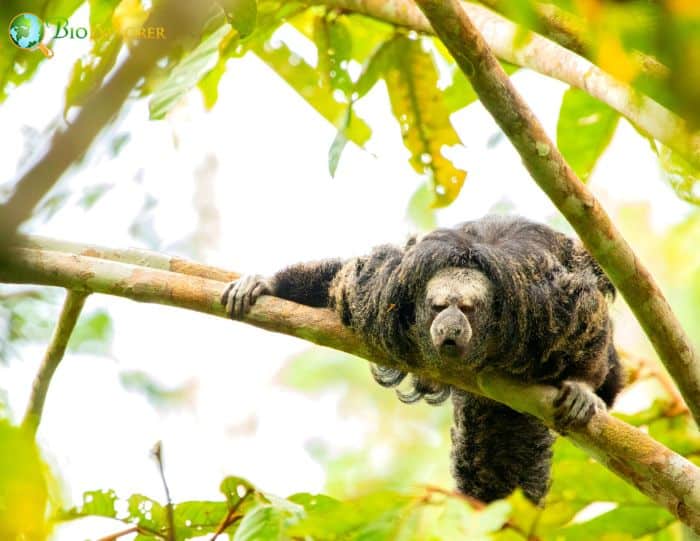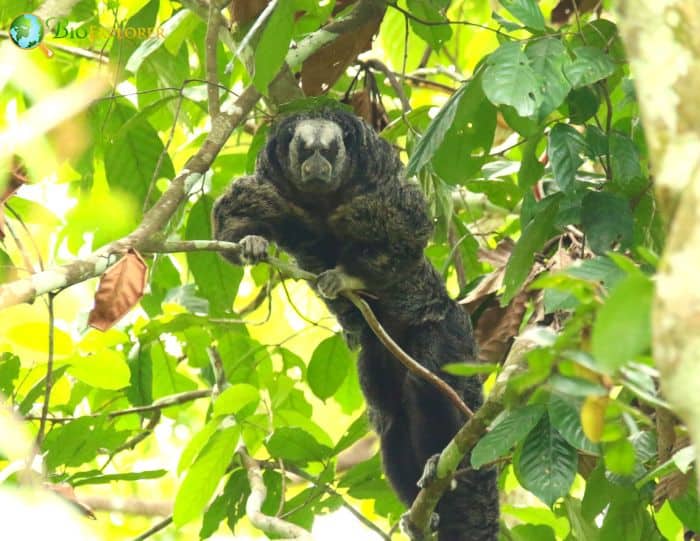
| Animalia | Primates | Pitheciidae | Pithecia | Pithecia napensis |


- Common Name: Napo Saki
- Taxonomy Classification Year: 1938
- Monkey Size: 20 to 50 cm (8 to 20 in)
- Skin Color(s): Black or gray
- Habitat: Forest, rainforest
- Diet: Omnivorous
- Native Countries: Ecuador, Peru
Napo Saki Distribution
Napo Saki Characteristics

The Napo saki[1] (Pithecia napensis), also called the Napo monk saki, is a species of saki monkey, a type of New World Monkey.
- Its range includes parts of northern Peru and eastern Ecuador. Napo-Sakis show slight sexual dimorphism.
- Male species have a black body, a dense coat of short white hairs on the crown, and a gray facial disc.
- They also sport a reddish or orange ruff on their chest. Female species are gray overall, with no facial disc or crown coloration.
- Their frill is brown and more subtle than that of the male species. Napo-sakis have particularly long hair around their faces and necks.
- Their tails are also covered in long hair, giving them a very bushy appearance.
Napo Saki Facts

- The species’ common name is derived from the Napo River in its locality.
- Napo-Sakis have several physiological adaptations that help them survive high up in the rainforest.
- They may exhibit piloerection to appear larger than they are, which can be helpful in territorial disputes or defense against predators.
- Their forward-facing eyes allow them to see stereoscopically, a lifelong necessity in the trees.
- A strictly arboreal species, Napo-saki sometimes descends to the lower levels of trees but rarely descends to the ground.
Suggested Reading: Monkey Varieties
Cite This Page
APA7MLA8Chicago
BioExplorer.net. (2025, April 14). Napo Saki. Bio Explorer. https://www.bioexplorer.net/animals/mammals/monkeys/napo-saki/.
BioExplorer.net. "Napo Saki" Bio Explorer, 14 April 2025, https://www.bioexplorer.net/animals/mammals/monkeys/napo-saki/.
BioExplorer.net. "Napo Saki" Bio Explorer, April 14 2025. https://www.bioexplorer.net/animals/mammals/monkeys/napo-saki/.










